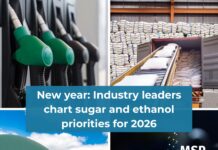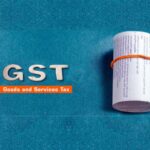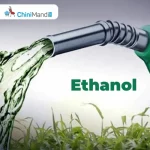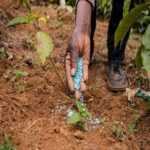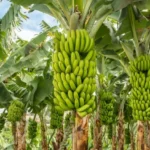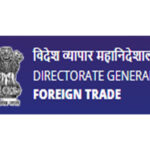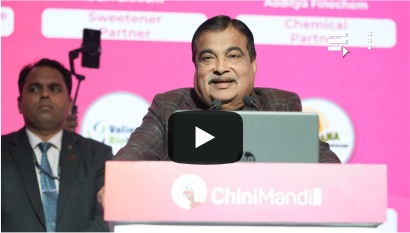In an in-depth conversation with Chinimandi, the Director General of the Indian Sugar & Bio-energy Manufacturers Association(ISMA), Deepak Ballani spoke about the various challenges facing the sugar industry.
The DG issued a strong rebuttal to the ongoing concerns regarding ethanol’s impact on vehicles, and said that India’s ethanol blending programme is scientifically validated, globally proven, and strategically crucial for the nation’s energy independence and farmer welfare.
Q1. In the preliminary sugar production estimate, ISMA projects 2025-26, gross sugar production (before diversion) in Maharashtra at 132.68 lakh tonnes. Which is an improvement over this year. What is your outlook on the new season?
Ans: Yes, the gross production in Maharashtra is expected to increase by around 42% to 132.68 lac tons, against last year’s production of around 93 lac tons.
The sugarcane acreage in Maharashtra and Karnataka has risen by 6–8% over last year, and supported by improved crop quality, a higher share of plant sugarcane and sufficient water availability, sugarcane productivity and sugar recovery are expected to improve significantly next year.
In Uttar Pradesh, proactive mill-level initiatives and varietal improvements are keeping disease pressures low. As a result, yields and recoveries are expected to improve, leading to a marginal increase in sugar output over last year.
The 1st preliminary estimates of sugar production, indicating an increase in gross sugar production (before diversion) by 18% to around 349 lac tons (with upward bias) in 2025-26 were released on 31st July’2025, as per the details below:
| S. No | States | Sugarcane Acreage | % Change over last year | 2024-25 (P) | 2025-26 (E) | |||
| Estimated Gross sugar production | Estimated sugar diversion | Net sugar production | Estimated Gross sugar production | |||||
| Lakh Hectares | BEFORE DIVERSION | AFTER DIVERSION | BEFORE DIVERSION | |||||
| 2024-25 | 2025-26 | Lac tons | Lac tons | Lac tons | Lac tons | |||
| 1 | Uttar Pradesh | 23.30 | 22.57 | -3% | 100.74 | 34.04 | 92.76 | 102.53 |
| 2 | Maharashtra | 13.82 | 14.93 | 8% | 93.34 | 80.96 | 132.68 | |
| 3 | Karnataka* | 6.40 | 6.76 | 6% | 53.68* | 41.86* | 66.19 | |
| 4 | Tamil Nadu* | 2.07 | 2.05 | -1% | 6.99* | 6.93* | 7.15 | |
| 5 | Gujarat | 2.31 | 2.22 | -4% | 8.94 | 8.92 | 9.41 | |
| 6 | Others | 9.21 | 8.71 | -5% | 31.38 | 29.60 | 31.06 | |
| 7 | Total (estimated end of season) | 57.11 | 57.24 | 0% | 295.07 | 34.04 | 261.03 | 349.01 |
*Special season 2024-25 is in progress in Karnataka and Tamil Nadu; therefore, final production figures have been estimated.
Q2. What is the expected carry-forward stock in the current season?
Ans: The closing stock in the current sugar season of 2024-25 is expected to be around 55 lac tons. The estimated Balance Sheet for 2024-25 is given below:
| Particulars | 2024-25 Quantity (Lakh Tons) |
| Opening Balance | 80 |
| Net Sugar | 261 |
| Total Availability | 341 |
| Domestic Sales | 278 |
| Exports | 8 |
| Closing Balance | 55 |
Q3. Are sugar prices between UP and Maharashtra showing strong convergence trends or high volatility?
Ans: The sugar prices have remained relatively firm in recent weeks, showing a flat trend with limited movement across major producing states. The current average Ex-mill prices are as follows:
• Uttar Pradesh (UP): 4000 – 4050 Rs per qtl
• Maharashtra: 3890 – 3920 Rs per qtls
Key Factors Influencing Volatility:
Going forward, the movement in sugar prices will continue to depend on several policy and market-related factors:
• Government decision on revision of ethanol procurement prices – Any increase or stagnation directly impacts sugar diversion towards ethanol production.
• Revision of Minimum Selling Price (MSP) of sugar – An upward revision can provide additional support to millers, while delay in decision keeps prices under pressure.
• Allowance of sugar exports – Export policy plays a vital role in balancing domestic supply and demand, thereby influencing ex-mill prices.
Q4. The ethanol procurement price is stagnant. How is this impacting the sugar mills?
Ans: There has been no revision in ethanol procurement prices for juice/B-heavy ethanol since 2022–23 ESY, whereas the sugarcane FRP has increased by 16.5% since 2022–23. The current OMC procurement prices are approximately ₹5–6 per litre lower than the actual cost of production and about ₹10–11 per litre lower than the price derived from the Government-determined formula, leading to financial stress for mills.
The table below presents the comparative details.
Cost & Price Comparison – 2025–26 (In Rs/ltr)
| Feedstock | Cost of production | Formula Price* | Current Price | Price Gap with CoP | Price Gap with Formula price |
| B-Heavy Molasses | ₹66.09 | ₹70.65 | ₹60.73 | ₹~5 | ₹~10 |
| Cane Juice | ₹70.70 | ₹76.33 | ₹65.61 | ₹~5 | ₹~11 |
*Formula Price calculation basis the formula used by Government from 2018-19 to 2022-23.
This price misalignment makes ethanol production economically unviable, and could discourage mills from diverting sugarcane for ethanol production. Consequently, there is a real risk that sugar diversion to ethanol will reduce, leading to excess sugar in the market and setbacks in achieving the government’s 20% ethanol blending target by 2025–26.
Q5. Are you asking the Government to allow sugar exports, especially when the prices are unviable in the international market?
Ans: Yes, considering the sugar balance sheet, India will have sufficient surplus even after meeting all domestic requirements and ethanol diversion. For the current season 2024-25, the closing stock is estimated at around 55 lakh tons, which is a comfortable level. Looking ahead, in 2025-26, with gross production of 349 lakh tons, the country will have a surplus of around 120 lakh tons (55 + 349 – 284) after domestic consumption. Even after diverting 50 lakh tons for ethanol, there will be net sugar production of 299 lac tons, and about 70 lakh tons will remain as carryover stock.
This strong position creates room for exports of 20 lakh tons, subject to international market conditions and government policy. Therefore, while we acknowledge that global prices are currently unviable, the domestic surplus clearly warrants consideration of calibrated exports to manage stock levels and ensure stability in the sector.
Current year sugar season 2024-25 is expected to end at around 53-54 lac tons. Estimated Balance sheet for 2024-25 is given as below
| Particulars | 2024-25 | 2025-26 |
| Opening Balance | 80 | 55 |
| Net Sugar after diversion | 261 | 299.00 |
| Total Availability | 341 | 354 |
| Domestic Sales | 278 | 284.00 |
| Exports | 8 | |
| Closing Balance | 55 | 70 |
This balance sheet indicates that the sector remains well-positioned to meet domestic demand, contribute to the ethanol blending programme, and explore export opportunities without compromising internal stability.
However, early announcement of exports will enable mills to plan their production process to cater to raw sugar demand for exports.
Q6. The sugar MSP has not been increased despite repeated pleas to the Government. How is ISMA approaching this matter with the policymakers?
Ans: Yes, ISMA has recently made several critical submissions to the government addressing pressing concerns surrounding sugar pricing, ethanol policy, and export-related challenges. These recommendations are aimed at safeguarding the viability of sugar mills and ensuring timely cane payments to farmers while supporting the broader objectives of the Ethanol Blending Programme and agricultural income growth.
-Revision of Minimum Selling Price (MSP) of Sugar
The MSP of sugar was last revised in February 2019 to ₹31/kg, based on a sugarcane FRP of ₹275/quintal. Since then, the FRP has steadily increased—reaching ₹355/quintal for the 2025–26 sugar season—reflecting a 29% rise. However, despite this significant cost escalation, the MSP has not been revised in tandem, creating a widening gap between production cost and market realizations. Moreover, raw material and operational costs have surged considerably in recent years.
We believe that an automatic pricing formula that links the MSP of sugar with the FRP of sugarcane is essential to maintain a sustainable financial model for mills. This linkage would ensure viability in cane procurement, maintain cash flow for timely farmer payments, and support industry operations.
Key Issues:
-Farmer Payments: Sugar mills collectively disburse ₹1.1–1.2 lakh crore annually to around 5.5 crore sugarcane farmers. An unrevised and non-remunerative MSP severely impacts the liquidity of mills, risking payment delays.
-Depressed Market Prices: In early 2024–25, sugar prices fell to ₹34–35/kg in major producing states like Maharashtra and Karnataka—well below the cost of production. This trend was also observed throughout the 2023–24 and 2022–23 SS, with prices dipping below ₹33/kg.
-Mounting Arrears: In the absence of a viable MSP, cane arrears could build up, particularly in key states such as Uttar Pradesh, Maharashtra, and Karnataka.
-Stagnant Retail Prices: Over the past decade, prices of essential commodities like rice, wheat, and pulses have increased by ~120%, whereas retail sugar prices have risen only 25–27%, despite a sharp increase in production costs.
-Falling Domestic Demand: Sugar consumption for 2024–25 is projected to decline to 278–280 lakh tonnes, compared to 290 lakh tonnes last year, largely due to subdued demand from bulk buyers and evolving consumption trends.
-Surplus Output Forecast: With favorable monsoons and robust cane planting, sugarcane production is expected to be strong in 2025–26 at around 349 lac tons and positive outlook for 2026–27 also. Without adequate diversion to ethanol or export support, this will likely lead to excess sugar stocks.
-Export Subsidies: In the past, the government provided ₹14,500 crore in export subsidies (2017–18 to 2020–21) to offset revenue gaps. A similar intervention may be needed again if global prices remain unviable.
Cost of Production – 2025–26 (Based on ₹355/qtl FRP)
ISMA has calculated the net cost of production of sugar as ₹40.24/kg, based on industry data. The breakdown is as follows:
– Cane cost per 100 kg sugar: ₹3,513
– Net conversion cost per 100 kg sugar: ₹511.5
– By-product credit per 100 kg sugar: ₹523.29
– Net Production Cost per 100 kg sugar: ₹4,024.49/quintal = ₹40.24/kg
According to the government’s own formula, the MSP of sugar should align with the cost of production. Therefore, ISMA has proposed an MSP of ₹40.2/kg for 2025–26.
Implications if Requests Remain Unaddressed:
– Mills may be forced to reduce ethanol production, resulting in sugar stockpiling and heavy losses.
– Domestic prices could crash further; exports may remain unviable given global price bands (15–16¢/lb).
– The government may need to reinstate export subsidies to absorb surplus stocks.
– Most critically, delayed cane payments could strain farmer livelihoods and increase the financial distress of mills.
ISMA hopes that the government will favourably consider:
– Revising the MSP of sugar in alignment with the rising FRP of cane
– Ensuring ethanol procurement prices reflect actual production costs (details given in previous questions)
– Supporting policy mechanisms to manage surplus sugar and maintain financial sustainability in the sector (details given in previous questions)
These measures will not only protect farmer incomes and mill viability but also help India meet its ethanol blending and food security goals in a balanced
Q7. There have been several discordant voices on Ethanol fuel and its adverse impact on vehicle engines and mileage. How does the Association plan to counter this smear campaign?
Ans: In light of recent misinformation circulating on social media regarding ethanol-blended petrol (E20), it is essential to clarify that India’s ethanol blending programme is scientifically validated, globally proven, and strategically crucial for the nation’s energy independence and farmer welfare.
Contrary to claims that E20 fuel damages vehicle engines, extensive testing by Oil Marketing Companies(OMCs) and certification from the Automotive Research Association of India (ARAI) have confirmed E20 compatibility for Indian vehicles. Automobile manufacturers are already rolling out E20-compliant vehicles with clear labelling and user guidance. The Ministry of Petroleum and Natural Gas has already issued official data and technical findings affirming ethanol’s superior fuel characteristics, effectively addressing and dispelling such concerns.
Globally, countries such as Brazil have been using ethanol blends ranging from E20 to E100 for decades without reports of widespread vehicle issues. Brazil has been running E100 vehicles since the 1980s and currently blends over 27% ethanol in its petrol, with advancements to achieve a 30% base blend by 2030.
From an economic perspective, the ethanol blending programme has emerged as a game changer for over five crore sugarcane farmers across India. More than ₹1.18 lakh crore has been transferred to farmers through the ethanol ecosystem. This improves the financial health of sugar mills, ensures timely payments to farmers, and helps manage excess sugar inventories, ultimately stabilising sugarcane prices and protecting farmer incomes. The programme aligns strongly with the Government’s ‘Annadata se Urjadata’ vision of transforming farmers into energy providers.
Ethanol blending is also a key pillar of India’s energy security strategy. With the country importing over 85% of its crude oil requirements, increasing ethanol use helps reduce this dependency. The E20 target alone is expected to save ₹35,000–₹40,000 crore in foreign exchange annually, shielding the Indian economy from volatile global oil prices.
Environmental gains from ethanol are equally significant. On a lifecycle basis, ethanol reduces greenhouse gas emissions by 40–60%. Experiences from cities like São Paulo in Brazil, which has seen over a 50% drop in urban air pollution due to ethanol use, demonstrate the public health potential of widespread blending.
The recent negative campaign on social media against ethanol-blended fuels is not only misleading but also detrimental to a nationally important programme. The ethanol blending initiative has been developed through rigorous scientific testing, with the support of industry, government, and regulatory bodies. It supports farmers, boosts rural incomes, reduces oil imports, cleans the environment, and sets India firmly on the path to sustainable development.
In conclusion, ethanol is not just an alternative fuel — it is a cleaner, smarter, and more inclusive energy solution for India’s future. Ethanol-blended fuel is safe, strategic, and central to India’s journey toward self-reliance and environmental sustainability.
Q8. Is there any continual dialogue with the Government to introduce a national roadmap on Flex-fuel Vehicles?
Ans: Yes, we have been requesting the Government for the promotion of FFVs. The government has advised BIS to prepare ethanol standards for E 22, 25, 27 and 30.
Also, the GST impact on FFV vehicles needs to be reduced and aligned with 5% bracket for EVs. Recently, PM’s speech on Independence Day indicated the overall slab rates of GST.
ISMA has been continuously engaging with the Government on Policy Support to Advance Adoption of Vehicles with Higher Ethanol Blend.
ISMA has asked for GST rationalisation for FFVs/FFV-SHEVs/FFV-PHEVs, because the manufacturing costs of all green technologies are higher than conventional Internal Combustion Engine (ICE) vehicles. A similar GST rate on these vehicles, in line with the ICE vehicle, will act as a major disincentive for adoption.
ISMA has proposed that GST on FFVs/FFV-SHEVs/FFV-PHEVs be kept at 5% slab to encourage demand-side and their production.
Similarly, ISMA has asked the Government to reduce the GST on E100/E85 fuel from 18% to 5%, in line with the GST for ethanol procurement under EBP. This will help in the easier adoption of higher ethanol blends.
Q9. Vis-à-vis the molasses-based ethanol, ethanol from grain-based sources is getting more preference. How do you think this could be addressed?
Ans: Currently, the installed capacity for sugar-based ethanol manufacturing — including both conventional and dual-feed distilleries — stands at approximately 900 crore litres. At an operational efficiency of 90%, this capacity can produce nearly 810 crore litres of ethanol/Alcohol. After catering to the mandatory requirement of ENA (around 30 cr ltr equivalent to 26% C heavy molasses) by the UP Government, the sugar sector can still supply a maximum of 780 Cr ltr of ethanol. With sufficient feedstock available and robust infrastructure in place, the sugar industry is well-positioned to strongly support the ethanol blending programme.
However, even after catering to applications for industrial uses in different states, the potential for ethanol supply is around 640 Cr ltr, which is more than 50% of the requirement for 20% blending @ 1150 – 1200 cr ltr of total requirement.
Q10. As the apex Association, what is your appeal to the Government and member sugar factories for a growth-oriented and sustainable industry going forward?
Ans: As discussed above, 3 major concerns need to be addressed:
1) Revision of ethanol procurement prices and their alignment with the FRP of sugarcane
2) Revision in MSP of sugar in alignment with FRP of sugarcane
3) Allowance of exports of surplus sugar
The sugar sector has always been committed to supporting farmers’ interests, contributing to national energy security through the Ethanol Blending Programme, and ensuring food security by maintaining sufficient domestic sugar availability. However, resolution of the above issues is critical for sustaining the long-term growth of the sector, improving farmer welfare, and strengthening India’s position in the global sugar and bio-energy value chain.




